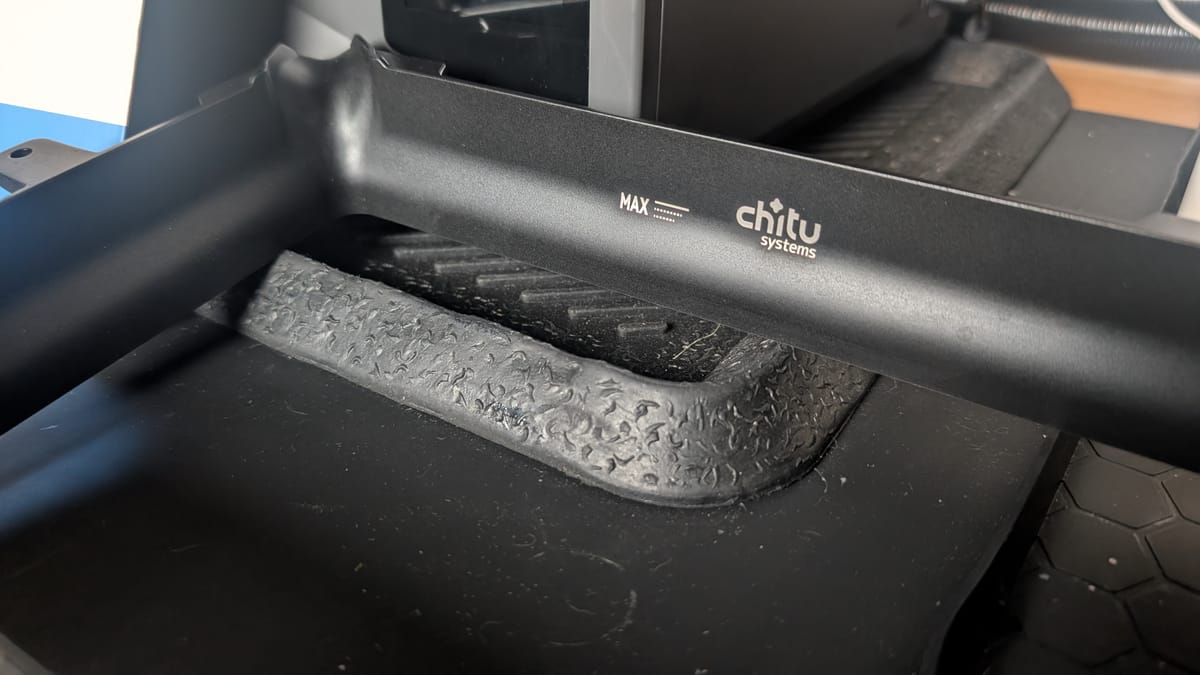
If you’re into resin 3D printing, there are a handful of irritating things that make you question whether or not the squeeze is worth the juice. Resin printers are full of consumable objects, including the screen and the release film that your objects use to print. When those wear out, you end up with a catastrophic failure that causes a spill directly onto the screen (or screen protector if you’re smart). Changing this release film is critical, but if you’ve ever done it, you know that it is a lengthy process with a lot of screws, trimming, tightening, and more. What if I told you there is another way that could take you less than two minutes? Intrigued? Let’s talk about the Chitu Systems Hoopat Vat – an amazing advancement with a very silly name.
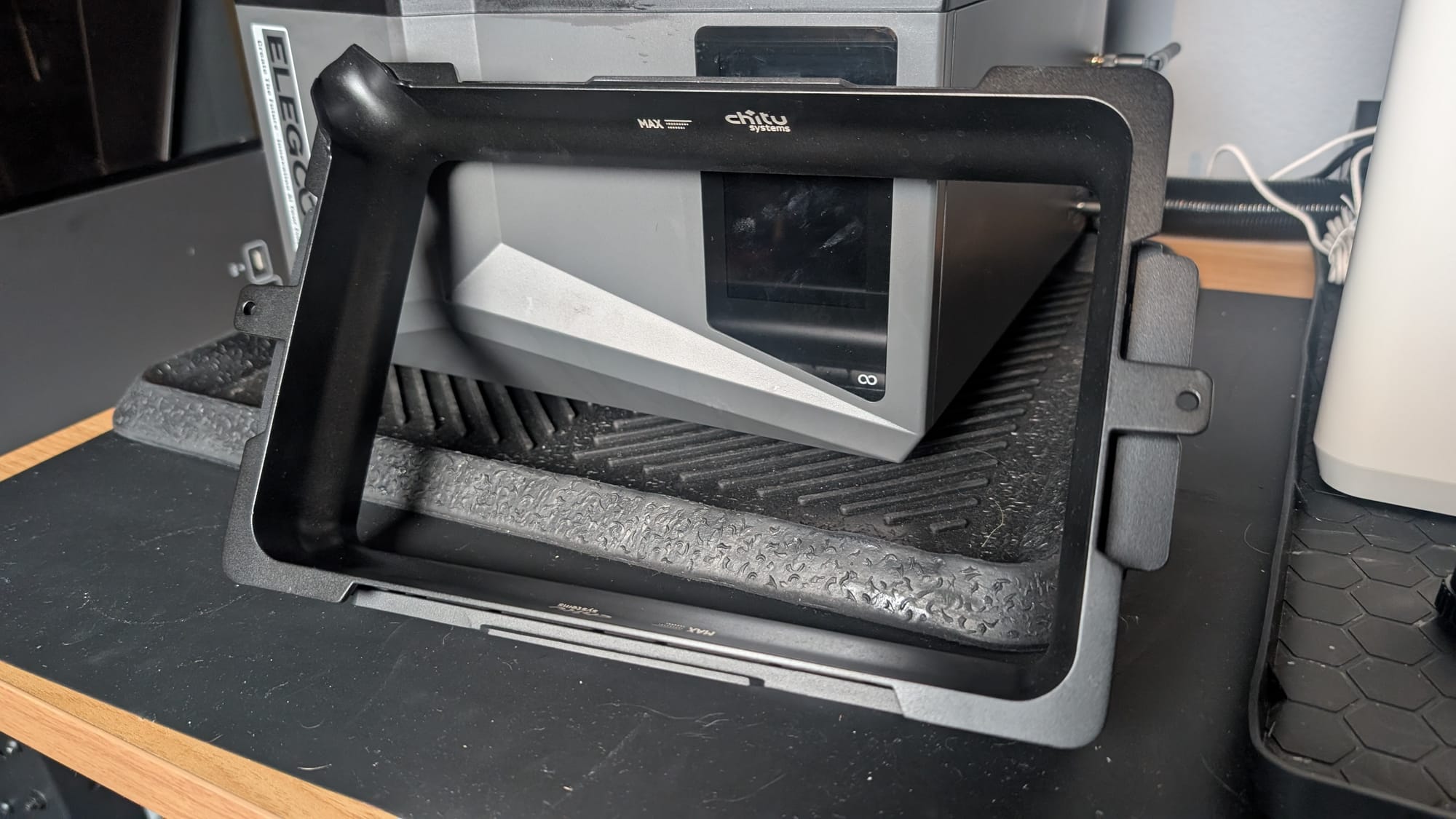
As a quick aside, I wasn’t able to find a translation for the word “Hoopat” in Chinese, so I can’t explain where it comes from. It seems to be a simple brand name for the vat with no direct meaning – it just sounds odd in English. Moving on.
I recently collaborated with SUNLU and Loot Studios to bring Izat'al the Dragon Empress to life. As you can see below, she is absolutely massive. To ensure she made it to Sunlu’s booth for the REACT+TCT show, I knew I’d have to move really quickly on getting her printed so we’d have time for post processing and paint. As such, I put two Saturn 4 printers to work. The printers suggest that you can get about 60,000 releases out of a film. Printing a dragon as big as Izat’al required multiple changes to the release film, so the Hoopat Vat sounded like a great addition to the process.
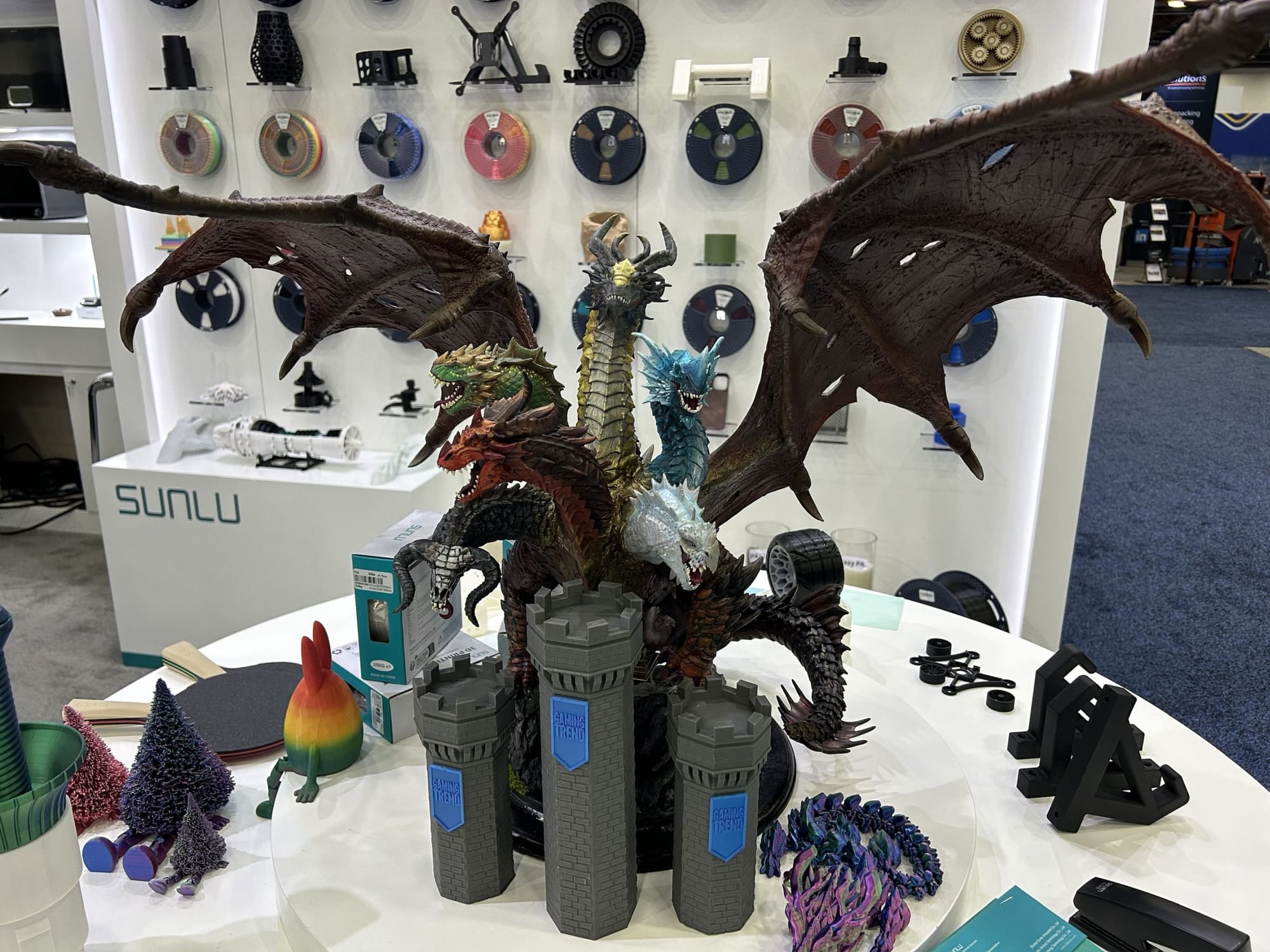
Looking at the Hoopat Vat’s construction, the entire frame is metal, just like the OEM vats from Elegoo. On all four sides is a latch system that opens to release the sheet, and a convenient contoured pour spout on one corner. It’s a more pronounced pour spout than I’ve seen on any other resin tank, but in practice I’ve found that it drips a lot less during resin changes. There’s also a really small addition that I really appreciate – the max fill line is printed on both sides of the tank.
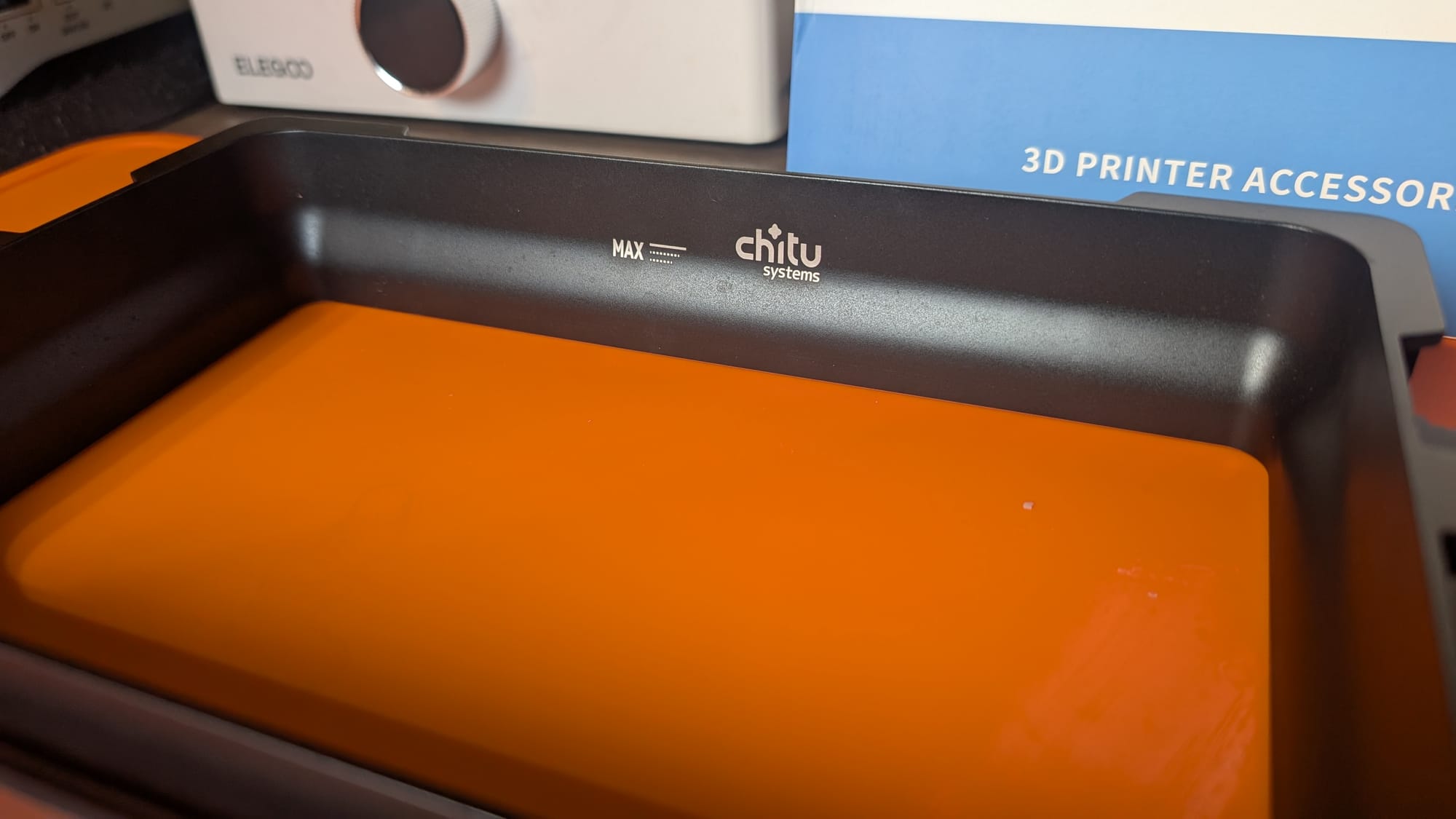
If you've ever changed a FEP sheet you know that it's a lengthy process. On the Elegoo Mars for instance, there are 14 screws for the top plate, and underneath that are 24 more! For larger printers like the Saturn 4 Ultra, it's 16 for the top, and then 28 fixing screws. Once you put the new sheet in, you’ll find that it’s loose, and you’ll have to alternate back and forth placing the 28 fixing screws to get the tension even across the surface. If you botch this process, there’s a good chance you’re going to have spots that are tougher to level against, possibly causing issues with your print. What if you could do all of this in under a minute, and the tensioning was done for you?
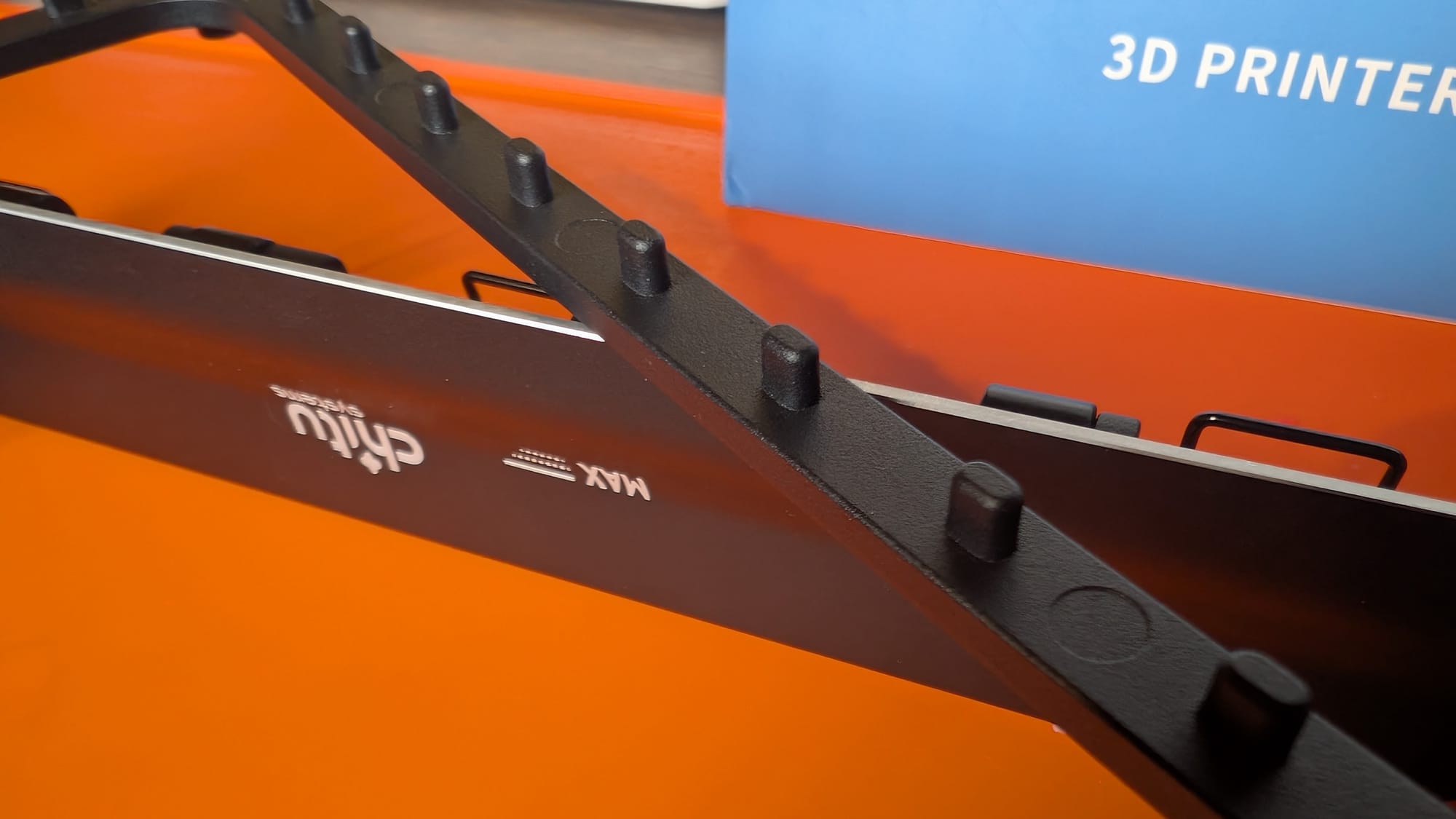
The film in the Hoopat Vat is PFA (perfluoroalkoxy) film – the standard release film you'll find just about anywhere, and a step above FEP. Each one of the films in the pack have instructions for applying it, but frankly you don't need it. Around the edge of the Hoopat Vat PFA is a series of small rectangles. Releasing the four latches allows the inner ring to release, exposing 38 small rectangles that correspond with the spots on the PFA. Laying the sheet directly onto these rectangles, ensuring it’s seated all the way around, and then placing it back into the tray is step one. Closing the latch is step two. Remove the protective cover plastic handles step three. That’s it – there is no step four! You don’t need to jump back and forth between screws to ensure the sheet is evenly tensioned – that’s handled entirely by the vat itself as it latches into place. As you close the latches, you hear the tension immediately as your voice bounces off the surface! This fully-tensioned PFA ensures a more consistent print across the entire plate, and should mean a longer lasting FEP. I still recommend you change it every 60,000 releases, but it means you’ll get the full use of it for its entire lifespan.
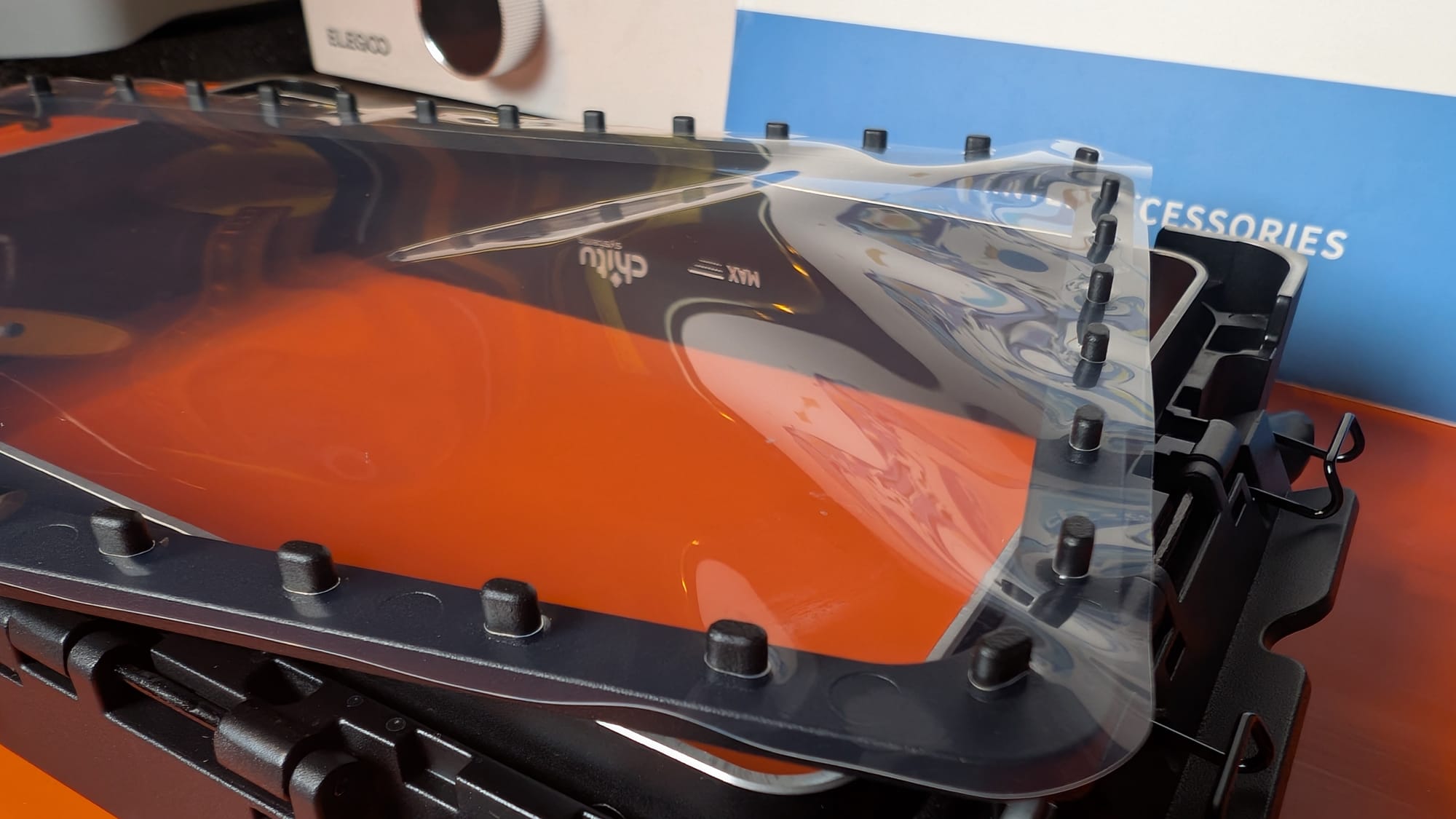
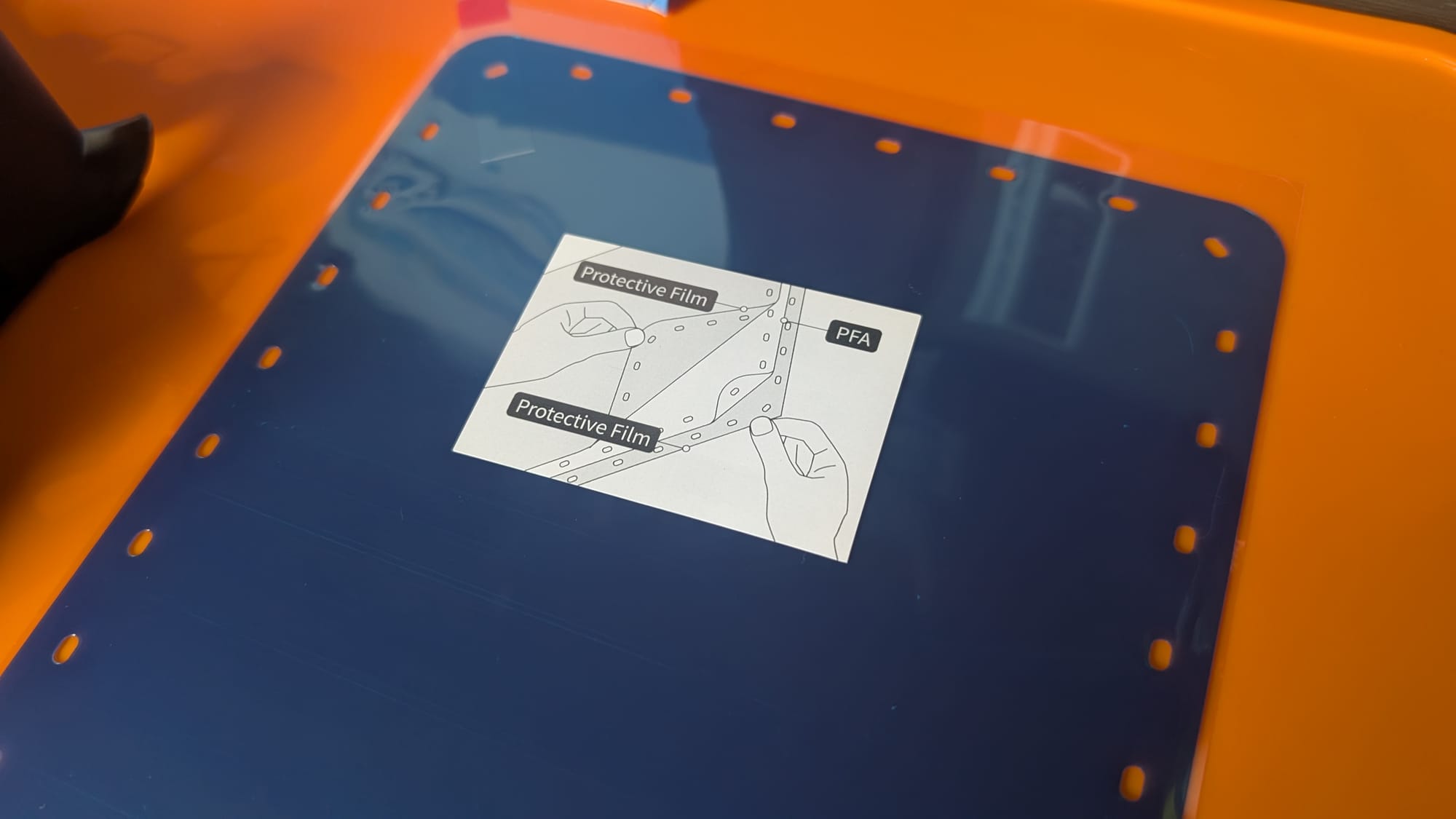
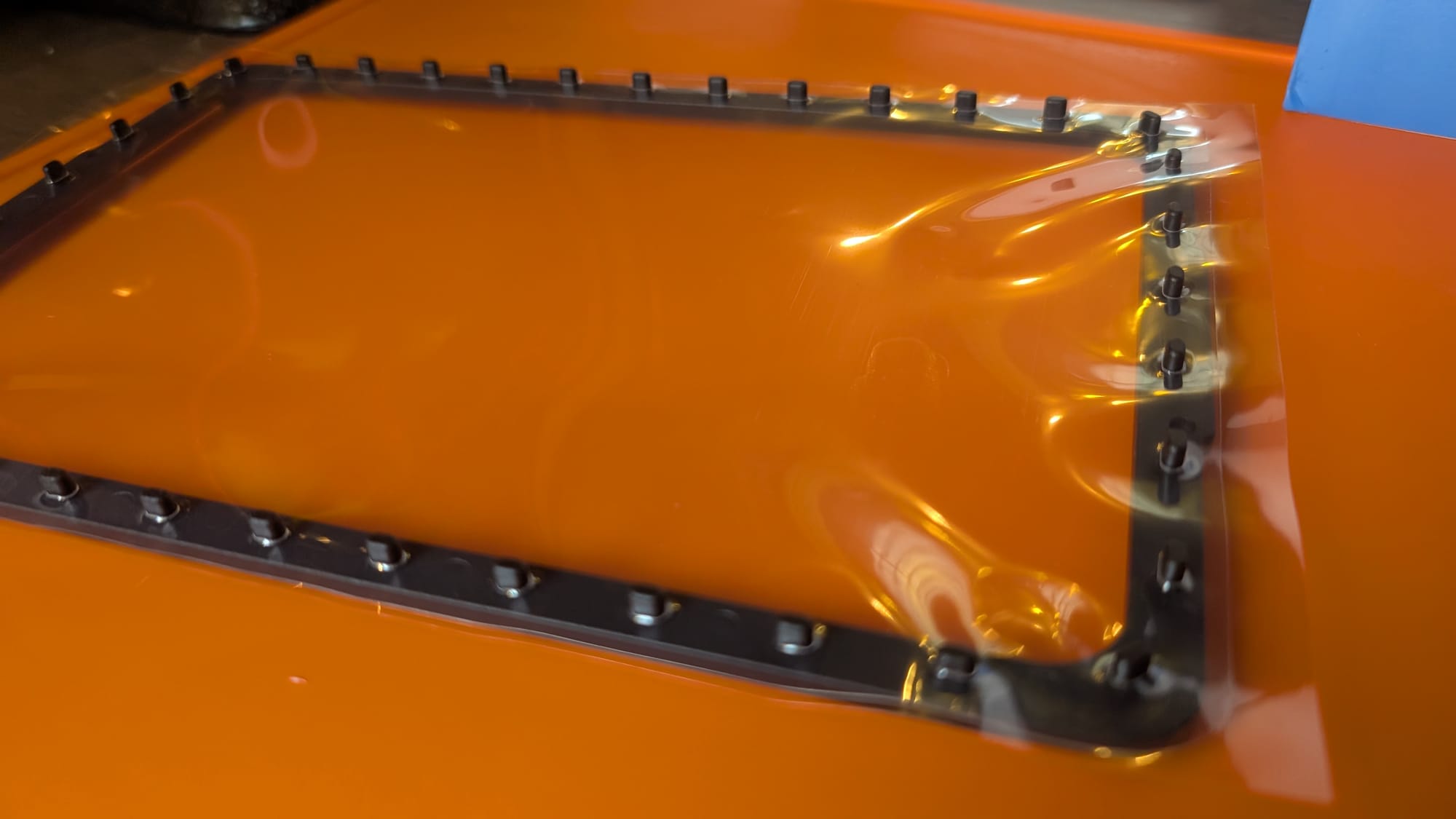
Instant, perfect tension.
In addition to PFA, Chitu also offers ACF as an option. ACF, or Advanced Composite Film, is a new release film type that outperforms PFA and FEP (fluorinated ethylene propylene resin). Not that it’s going to enhance your life in any way, but tension strength is a measurement of how much stretching a surface can handle before stretching and breaking. FEP has a tension strength of 14-21 mPa, or millipascals of pressure. Converted, that’s about 2 pounds of pressure force before you’d have a tear. FEP pushes that up to 29 mPa. A higher pressure means the pressure of the print being peeled off the print bed causes less flex on the sheet, thus providing better layer separation, and less stress on the sheet itself. ACF is thicker than FEP and PFA, and as a result has roughly 50 mPa. That reduced suction pressure, combined with a smoother surface, results in a higher success rate for printing, though it is slightly more expensive. The fact that the vat is designed to provide even pressure across the entire film means you’ll at least get everything you paid for.
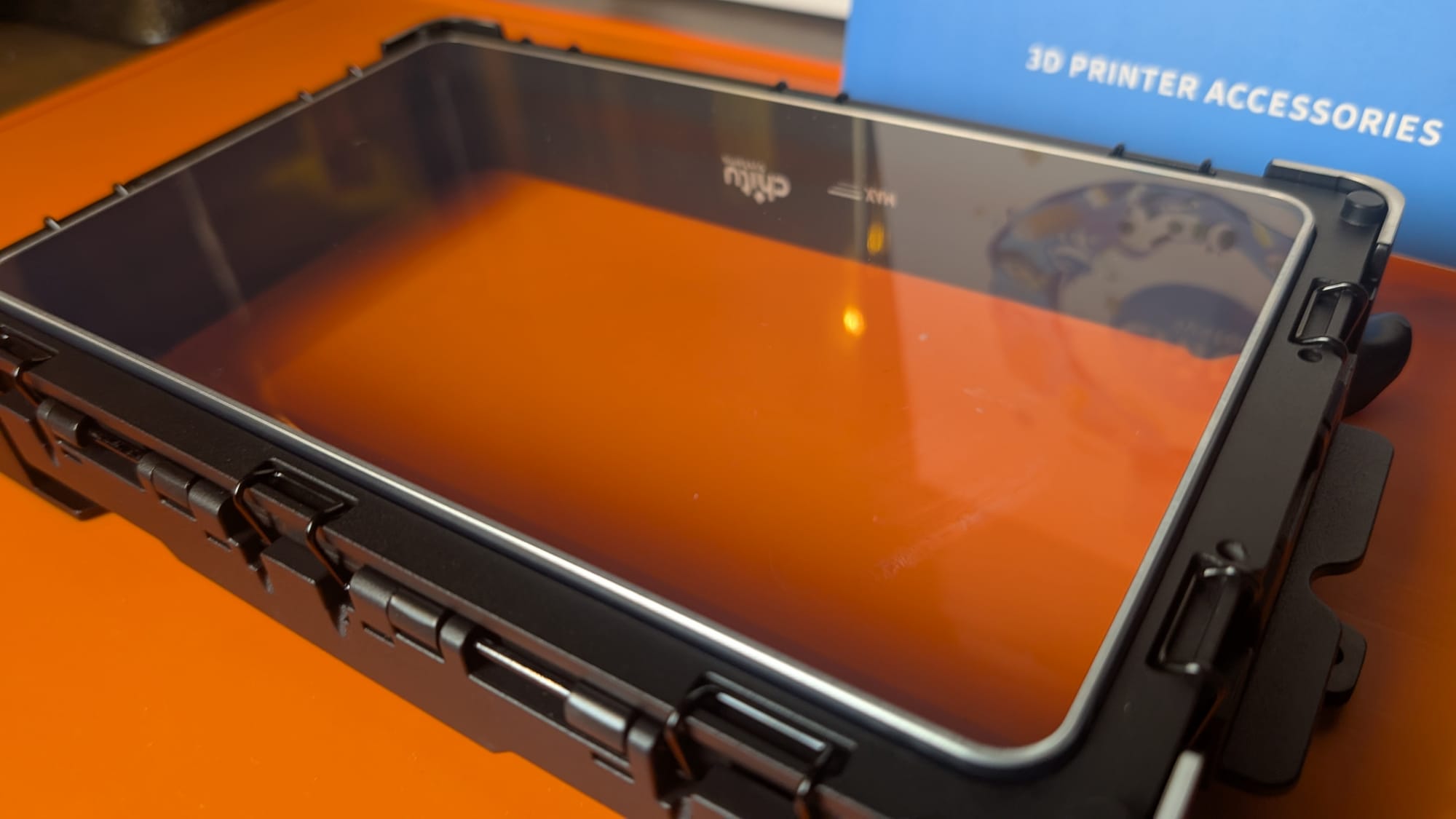
I have to admit, I was rather nervous about the additional space taken up by the clips on the side of the vat. The Saturn 4 Ultra uses a rocking vat system to release the plate from the film instead of pulling the plate straight upwards, and there isn’t a lot of clearance between that vat and the sides and the chamber. The first movement of the vat when it rocked was a nailbiter, but the Chitu team clearly did their homework – it worked flawlessly. They put together two videos – how to change the PFA or how to change the ACF film, but I think I just showed you how easy it truly is.
I could tell you all about the results, but honestly, why do that when I can show you? Using standard SUNLU ABS-like Grey resin, I was able to print this massive dragon that you can see throughout this review. I printed non-stop for weeks, printing a total of nearly 100 objects, fully filling the plate more than a few times, and had zero failures. Izat’al used up two release films, one for each printer, to bring her to life. 30 minutes to swap a release sheet doesn’t take into account all of the inevitable cleanup process. It’s also at least 30 minutes of time your printer isn’t producing. Being able to swap the release sheet and be back to work inside of a minute also makes you less likely to try to stretch that 60,000 releases number. I speak from experience when I say that this number is less of a suggestion and more than a warning. I took one release sheet all the way out to 70,000 releases and then spent a few hours scraping resin off my printer after a busted FEP and a leak. Thankfully I had the sense to use a screen protector, but that’s hardly the point. Being able to quickly and easily swap the release film has conditioned me to swap them at 60,000 like clockwork as it’s too easy to put off.
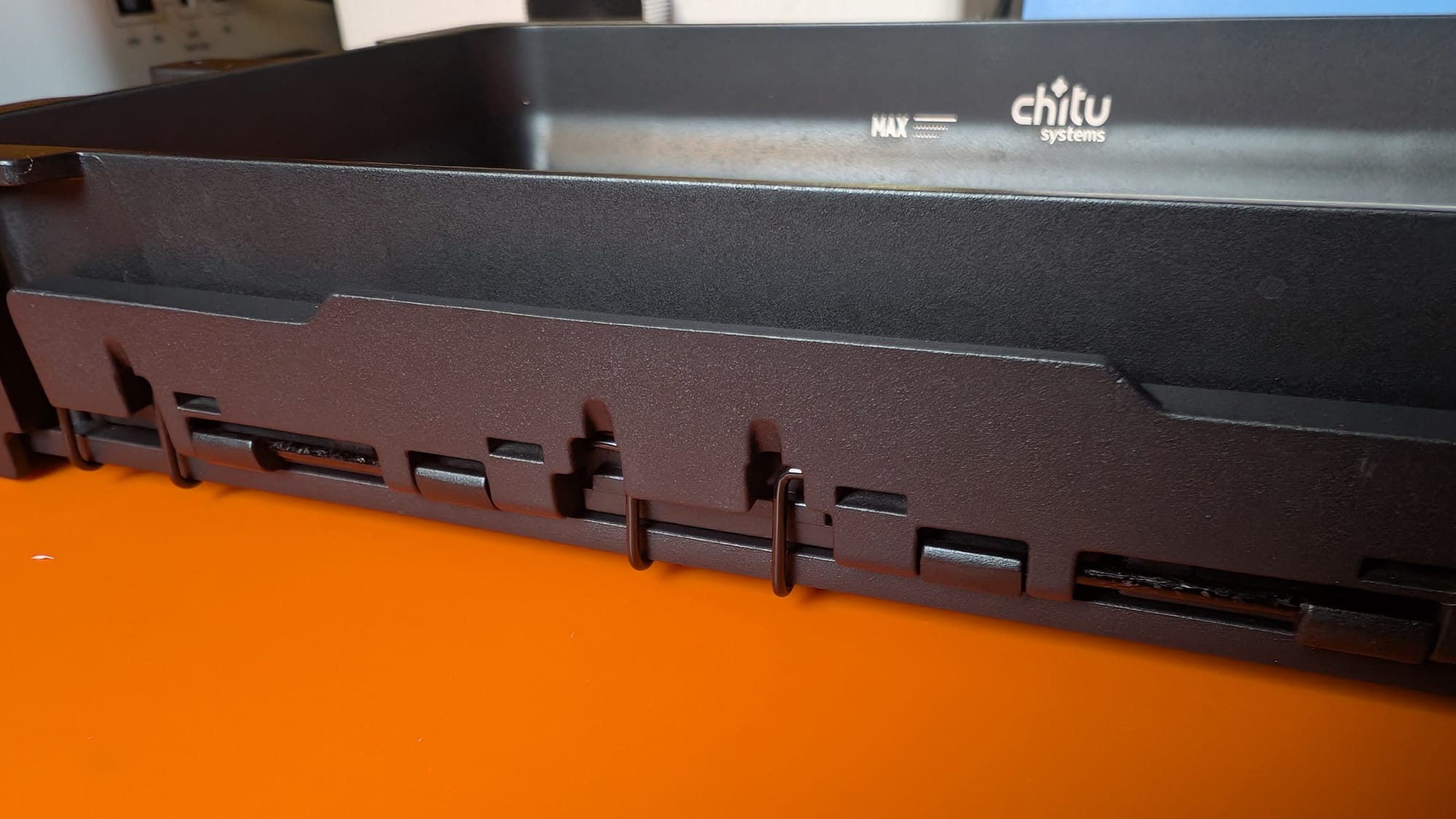
The part that I like most about the Hoopat Vat is that it’s completely tool-less. You only need the Allen wrench that came with the printer to swap the release film with the vat that comes with these printers, but with the Hoopat Vat you can do it by simply latching and unlatching the sides.
The only downside for the Hoopat Vat is the obvious one – pre-perforated FEP films. These sheets limit compatibility with standard resin vats, meaning you’re not able to pick up generic release sheets and use them. If Chitu was inclined, they could design the vat keys to be sharp to poke holes in a standard PFA sheet, but maybe that’s wishful thinking, or it’d be more prone to tearing. Somebody with more product engineering experience than I could answer that. I do appreciate that the pre-cut Chitu PFA sheets don’t require trimming, though, so that’s another improvement over the stock unit.
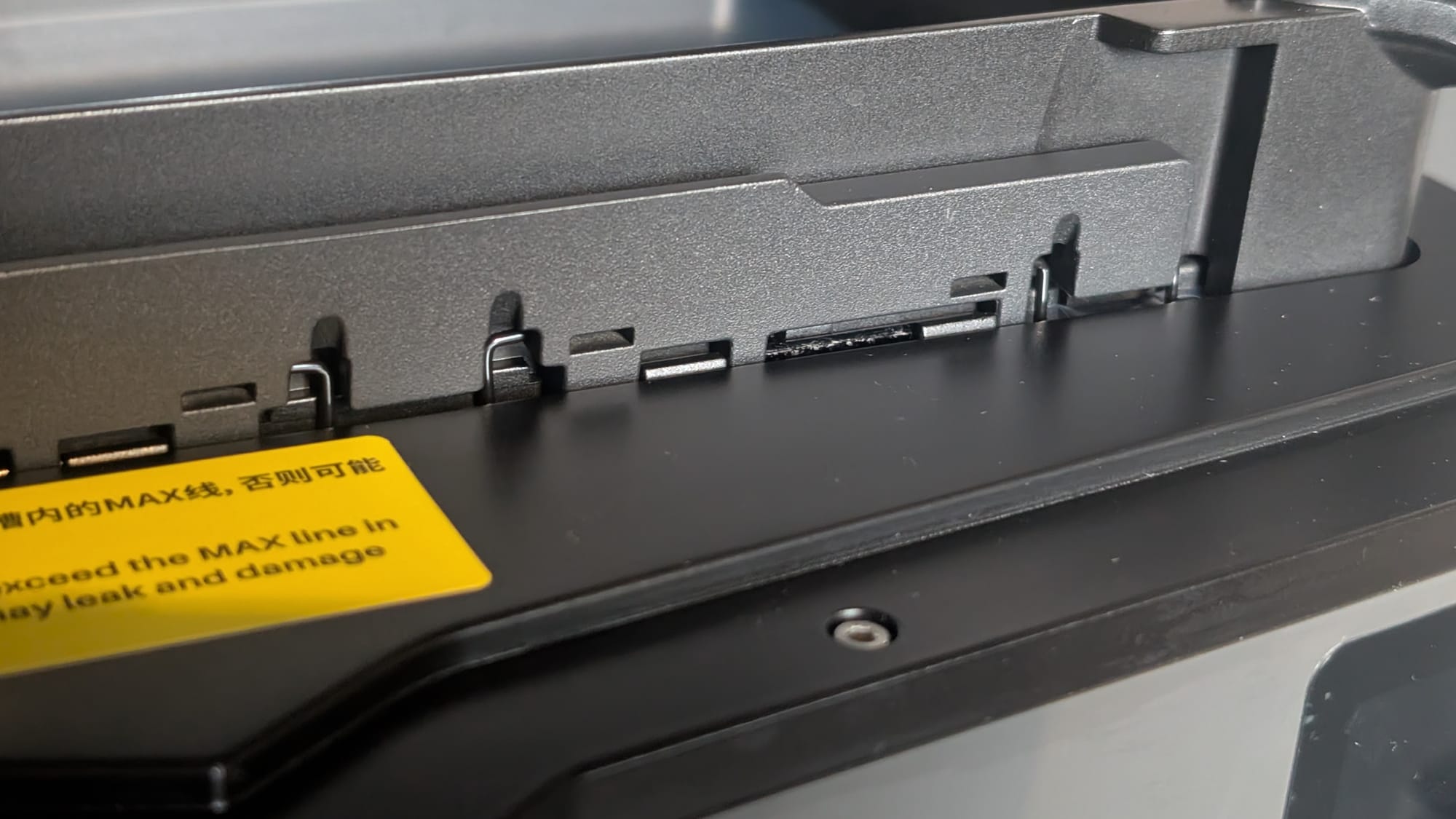
The cost of a standard Saturn 4 Ultra replacement will run you around $52 on Amazon, with the sheets being $30 for a pack of five. The Hoopat Vat is a bit more expensive at $90, though it comes with 3 release films. A five pack of either ACF or PFA are priced at $34.99, so the ongoing cost is at least comparable, though I only see that film being sold at Chitu’s site. If you are printing in larger volumes where release film changes are more frequent, the Hoopat Vat might be worthwhile as printers that aren’t printing aren’t making you money. If you’re printing occasionally and just like the idea of convenience, this might also work for you, albeit at a bit of a premium. Personally, I find the elimination of tensioning guesswork to be worth the price of admission. The ironic thing here is that Elegoo agrees – their new Jupiter 2 printer was just announced at REACT+TCT as having a similar vat design coming later in the year. Chitu’s approach is the wave of the future.
Chitu Systems Hoopat Vat
Excellent
With Chitu’s Hoopat Vat you can change your release film in a matter of seconds. The advanced materials and excellent build quality more than justifies the slight bump to cost, and the auto-tensioning clamps ensure a consistent print across the entire release surface. It may have a silly name, but I used it to print a 30 pound dragon without a single failure – it may have a silly name, but I’d say it works!
Pros
- Excellent build quality
- Works precisely as advertised
- Tool-less operation
- Even release film tension for more consistent prints
- Remarkably easy to use
Cons
- Slight premium to cost
- Proprietary design
- Can only get release films on Chitu’s official site
This review is based on a retail version provided by the manufacturer.
